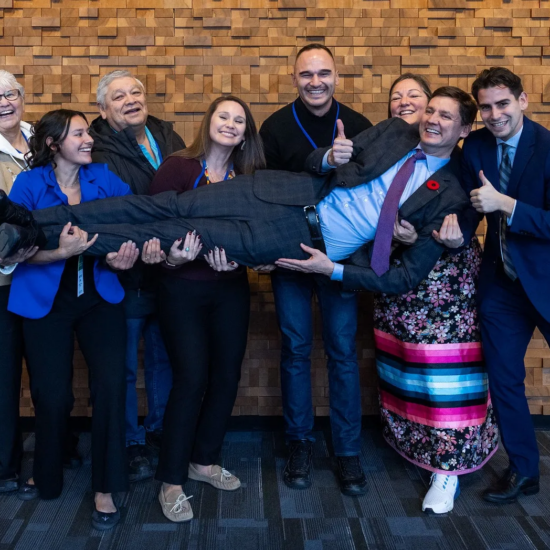
Bob Mackin
It was 8:04 a.m. on Jan. 21 and Metro Vancouver’s director of air quality and climate change policy sent a colleague an email under the subject “smoke smell in East Van.”
“Any intel?” Conor Reynolds said to Ken Reid, the superintendent of environmental sampling and monitoring.

Refinery main gate (Parkland)
Reynolds went to explore and reported back to Reid and Brant Arnold‐Smith, the security and emergency management program manager, at 8:21 a.m.
“Heads up that was a bad smoke smell around McGill and Nanaimo and then crossing the Second Narrows we saw a black/grey smoke plume near the refinery. Possibly flaring? Couldn’t pinpoint it as I was driving,” Reynolds wrote.
Documents obtained under the freedom of information law from Metro Vancouver and the Burnaby and Vancouver city halls offer a glimpse into the inconsistent response to the incident at the Parkland Fuel Corp. Refinery in Burnaby, the terminus of the recently completed, $34 billion Trans Mountain Pipeline.
As perplexed residents across the region took to social media, and calls came in to the E-Comm 9-1-1 hotline, Vancouver Fire and Rescue Services (VFRS) sent 17 fire trucks onto city streets to hunt for the source of the smell. There were so many calls, the VFRS duty chief had a hard time getting in touch with someone at E-Comm to ask that no more odour complaints be dispatched.
Burnaby Fire Department (BFD) crews rushed to the refinery after the initial 8:11 a.m. call about flaring issues. Parkland asked for firefighters to be on standby at the perimeter. At the peak, BFD had eight trucks and 34 personnel on-scene.
“On arrival the department found significant black smoke visible, and a strong odour was present from their fluid catalytic cracking (FCC) unit,” Fire Chief Chris Bowcock told mayor and council in a late afternoon email.
Two days earlier, Parkland had issued a level 1 advisory. It said there may be ”higher than usual flare and potential intermittent noise over the next several days as start up activities progress.” It had shut down operations on Jan. 12 due to the Arctic outbreak that enveloped Western Canada. The restart caused the flaring and subsequent depressurizing of the FCC unit.
The BFD timeline said that VFRS Chief Karen Fry was in contact at 9:36 a.m., “inquiring as to smell in East Vancouver.” Almost 20 minutes later, at 9:55 a.m., Fry posted on X, formerly Twitter, that BFD was on-scene for a “hydrocarbon industrial event.” Close windows out of abundance of caution, she wrote.
Burnaby officials contacted Vancouver Emergency Management Agency at 10:17 a.m. about a public notification via the Alertable app. At 10:23 a.m., Burnaby notified fire chiefs in City of North Vancouver, District of North Vancouver, New Westminster, Port Moody and Coquitlam. Almost an hour later, similar notifications to area First Nations leaders.
City of Vancouver issued a public safety advisory via Alertable at 11:03 a.m., to advise residents to close windows, doors and air intakes if they smelled the odour.
Environmental regulation and enforcement manager Kathy Preston told Reynolds at 11:48 a.m. that short term spikes had been observed, but the incident did not meet the criteria for a formal air quality advisory.
“We have agreed that the approach of a media advisory, plus the JungleMail message to the board, plus a social media message via Twitter/X, is the appropriate response,” Preston said.
Arnold Fok, Fraser Health’s regional environmental health services manager, chimed in at 12:22 p.m., after speaking to Michelle Bruce, Parkland’s incident investigator.
“Parkland setup its incident command system, no evacuation notice had been issued, Burnaby Fire Department had been on-site since 9 a.m. and was conducting ambient air testing,” Fok wrote. “Parkland was monitoring potential effects on workers on its property.
BFD tested the air for oxygen (O2), lower explosive limit (LEL), carbon monoxide (CO), hydrogen sulfide (H2S), and particulate matter (PM).
“The Air Quality Health Index in the region is still at low risk. This seems to be an acute event. Through Parkland’s internal air monitoring of their site, if the risk is low to their workers, then the risk to the community should also be low,” Fok wrote.
Just before 2 p.m., Environment Canada issued a special air quality statement for Metro Vancouver. At 2:40 p.m., Vancouver city hall ended its advisory. BFD cleared the second alarm incident at 2:44 p.m.
In Reid’s 8:33 p.m. email, he said most stations were not showing significant PM, sulphur dioxide (SO2) or total reduced sulphur (TRS) measurements. There were some elevated black carbon measurements at the Clark Drive station in Vancouver, he said.
“I also noticed an acrid odour near my place late on Saturday evening,” Reid wrote. “There was a high minute PM10 spike at [station] T24 North Burnaby on Sunday morning. This may have been a plume of smoke from the refinery, but difficult to know for sure. Some smallish SO2 spikes in the minute data for stations near Parkland.”
Fourteen refinery workers required first aid treatment. The company did not notify WorkSafeBC immediately, as required.
Parkland eventually reimbursed Burnaby for $31,872.30 on Feb. 29.
The refinery resumed full operations on March 29. The company told shareholders the seven-week shutdown would result in a loss of $60 million to $65 million for the first quarter.
Support theBreaker.news for as low as $2 a month on Patreon. Find out how. Click here.












